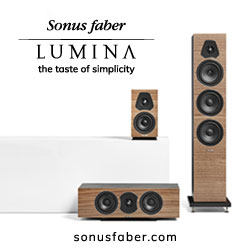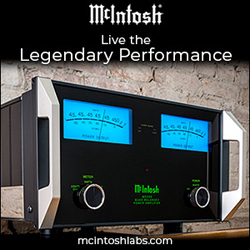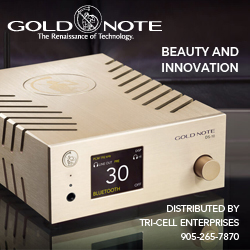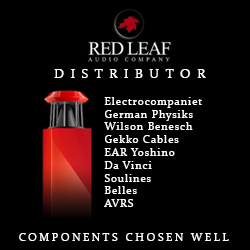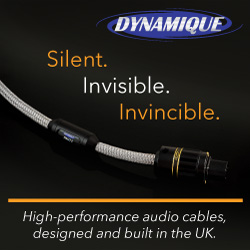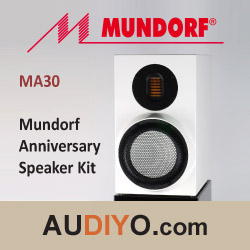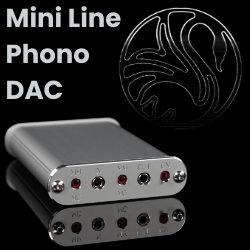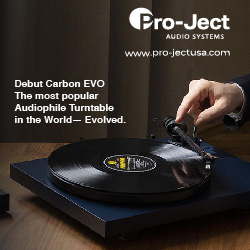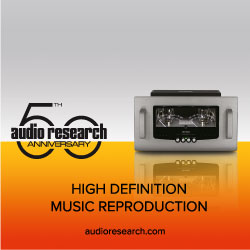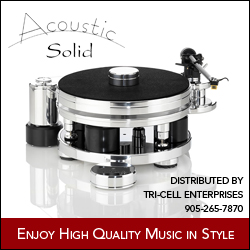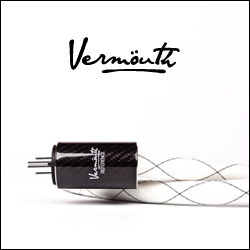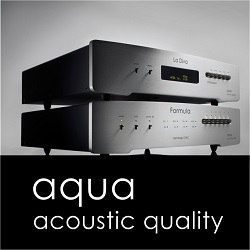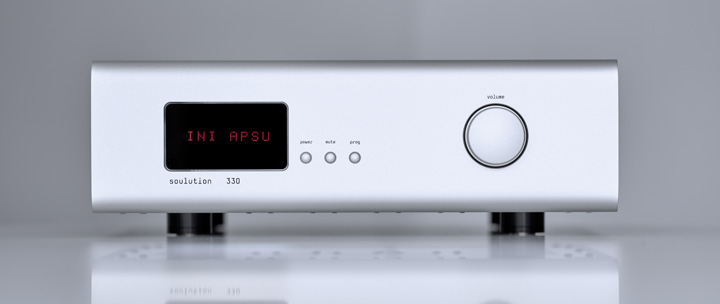
The review sample was provided to us by Canadian distributor Tri-cell Enterprises (www.tricellenterprises.com).
We can look at the 330 Integrated Amplifier (330 INT for short) in two ways:
This is one of the most expensive integrated amplifiers you can buy, at $20,000 US for the base unit and an additional $3,000 US for the phono option and $4,125 US for the DAC option for a grand total of $27,125 US.
Or
This is easily the most affordable pre and power amp combination fabled high-end manufacturer Soulution Audio has ever offered.
Soulution Audio is a division of the Swiss manufacturer Spemot AG. From their website:
“Spemot AG is a successful Swiss company active in developing and producing electrotechnical devices and e-motors. Our motors are applied in the automotive industry as well as in professional and semiprofessional tools. The business area electrotechnical appliances is focused on devices for the professional gastronomy. Our strengths are innovative products and services for client specific market-needs. Quality management plays key role in all our thoughts and actions. We do not consider only the quality of our products but as well the optimal level of service we provide towards our clients.”
Spemot’s President and majority owner is Cyrill Hammer while Roland Manz is the CEO. The company’s principal product is the electric motor, where Spemot can provide small quantities of high quality custom motors for a wide range of uses such as animal sheers, blowers and air conditioners. A second line of business is in electro-technical appliances for use in gastronomy and various other purposes.
Cyrill and Roland not only run this very successful operation, they are also keen audiophiles. In 2005 they decided to create a new line of business, audiophile components, using their engineering knowledge and deep love of the business. They began by buying the rights to an existing audio company Audiolabor, and they hired its top engineer. They invested $7 million (US) over 5 years to develop their 7 Series amplifiers. This was an assault on the high end, an attempt to build the best amplifier money could buy, using an approach that no one else had successfully taken.
The key to Soulution’s approach is the use of negative feedback. Negative feedback is of course in widespread use in the industry. By feeding back into the input a small portion of the amplifier’s output in opposite phase you can reduce or eliminate most of the harmonic distortion components inherent in amplification. But this feedback will introduce other errors such as TIM (transient intermodulation distortion) and SID (slew induced distortion) into the output. Debates rage about how much feedback is too much, although there is now a consensus that local feedback within a particular stage of the amplifier (Soulution power amps have three) is preferable to global feedback from the ultimate output to the input.
Soulution’s take on this is that there’s nothing intrinsically wrong with negative feedback, but there is a major problem with the way it has been implemented throughout the industry. Feedback does not occur instantaneously but only after a small delay, and the problems all stem from this delay. If feedback could be made to occur without delay, you could then eliminate the problems, and you could also increase the level of negative feedback applied significantly, producing an amplifier that both sounds and measures superbly. By using local instead of global feedback, we have reduced the delays, but what was really needed was a new approach. Soulution claim to reduce the delay between 100 and 1000 times. This requires extreme speed in the responsiveness of the power supplies, the selection of ultrafast switching devices, and extreme accuracy in all elements of the circuits, in addition to all the usual approaches of minimizing the length of the audio path.
Manufacturer’s Feedback on Feedback: According to Cyrill Hammer, my explanation here is a little simplistic and he asked me to add some additional thoughts. The key here is to approach a mathematically ideal step function. Due to slew rate limitations, an amplifier cannot immediately follow a step signal at the input. As a result, the step response of an amplifier is not a perfect step function (an immediate jump at the output in response to a jump at the input) but is a more or less steeply rising ramp. That is to say, an amplifier needs some time to reach the volume level that corresponds to the amplified input signal and therefore adds some “delay”. The closer you can approach the ideal step function the faster your amplifier must be, and the better it will sound as this minimizes the deviation from ideal behavior. By “faster” here we mean the amp must have greater bandwidth. While this may sound straightforward it took a long and tortuous development path for Soulution to achieve this breakthrough. At the core of the amplifier is a proprietary voltage amplification stage that consists of linearized amplifiers operating up to a cutoff frequency of 80 MHz.
Soulution’s 700 monobloc amplifiers caused quite a sensation in the industry. Although not to everyone’s taste, the amplifier produced extremely low harmonic distortion without introducing significant levels of TIM or SID. The sound was pure and unfatiguing, full bandwidth and proved pretty much unburstable into all loads. But this amp was more admired than loved. It was also mega expensive and extremely large and heavy.
The development team were as aware as anyone of these impediments, and worked diligently to overcome them. This they did with the replacement 701 amplifier, which took a new approach to the power supply. Instead of the traditional transformer based linear power supply, which tended to dip in voltage under high current drain, they moved to powerful switched mode power supplies. These were isolated from the audio circuitry through optocouplers and transformers, filtered and voltage regulated to provide an extremely fast, stable and accurate power supply which does not bend under stress. Soulution is not the only high-end company to take this approach. Linn Audio, EMM Labs and Chord Electronics are earlier examples. The increased stability and regulation achievable enables a smaller, lighter and cooler running amplifier, but the main benefit here was sound quality. This improved dramatically even though the amplification section of the 701 was largely unchanged from the 700. While all the good qualities of the 700’s sound remained intact, the sound was now more intense, warm and realistic, and pushed the 701 to the head of the pack.
Soulution’s engineers worked to fill out the Series 7 which now offers the 701 MONO, 711 STEREO, 725 PRE, 750 and 755 PHONO, 746+ SACD Player and 760 DAC, each component a statement in its field. They also realized that few would be able to afford this reference line and set about to bring the Series 5 to market, a series which would transfer as much as possible of the DNA of the Series 7 products, but make it more affordable. In fact, the switched mode power supplies appeared first in the Series 5 before finding their way into the top of the line Series 7. The 530 INT, which includes a phono input, was Soulution’s first integrated amp. The complete Series 5 comprises the 590 USB, 560 DAC, 550 PHONO, 530 INT, 525 PRE, 520 PRE, 511 STEREO and 501 MONO.
Now there’s a lot more going on than the unique feedback circuitry and switched mode power supply. Take the volume control used in the preamps and integrated amps. Some companies aiming for the highest quality of reproduction will include a discrete resistor ladder here, and accept the clicking noise you get at each increment when the wheel is turned. Soulution’s engineers found a better way. If discrete ladders sound better but make clicking noises as the servos switch the paths, and other volume controls act silently but are not acoustically transparent, they would use two closely matched volume controls. At any given static volume setting, you are listening through the discrete resistors, but the moment you start adjusting volume, the signal path switches to a secondary electronic volume control that does not click or sound particularly wonderful, switching back to the discrete resistors only when you stop adjusting the volume. And it works! You get just one click at the start of your volume adjustment and a second just after you stop making adjustments.
Now we have a new more affordable range from Soulution Audio. Series 3 comprises three components, the 325 PRE (preamplifier), the 311 STEREO (power amplifier) and the 330 INT (integrated amplifier). I could tell you that the 330 INT simply combines the 325 PRE and 311 STEREO into a single box. Actually there are some small differences, designed to reduce cost without affecting sound quality. As a full function preamplifier, the 325 PRE has balanced and unbalanced preamp outputs which the 330 INT forgoes. It has a balanced output labelled Out, but it is an output before the volume control, designed for hooking up a second amplifier for biamping. The 311 STEREO has balanced and unbalanced inputs designed for a signal that has already had its volume adjusted, while the 330 INT has no such inputs. The 311 STEREO has an optional ground lift on each channel which the 330 INT omits. Unless you really need any of those missing features, the 330 INT ($20,000 US) will save you a lot of money compared to buying the similarly sized 325 PRE ($11,175 US) and 311 STEREO ($17,250 US). You can also save space on your rack and you need one less power cord and set of interconnects. The 330 INT is the sweet spot in the Series 3 range, and I would always recommend it in preference to stacking the 325 PRE and 311 STEREO together.



